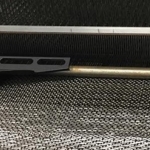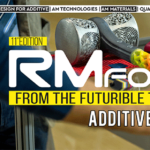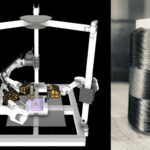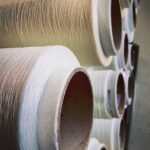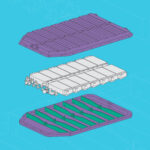The AMRC Composite Centre has formed part of a UK-wide research consortium tasked with developing innovative new manufacturing technologies and processes for composite material in the automotive sector. The consortium is made up of seven other companies and research organisations such as Jaguar Land Rover, SGL Carbon Fibres, the University of Nottingham and Nifco UK; who together, will focus on a project to create strong lightweight vehicle and powertrain structures to help vehicles deliver lower emissions.
Composite assemblies used in automotive manufacturing, such as side impact beams in door panels or roof panelling are created using separate carbon fibre reinforced plastic (CRFP) structural composite components.
These structures are secured by fixtures that are then ‘over moulded’ together using more composite material, this not only makes the final parts more aesthetically pleasing, but can also incorporate additional functional features and details to any completed structure.
The CRFP comes as ‘preformed blanks’ of material which are then cured to the desired shape; it is the development and production of these preformed blanks that the AMRC Composite Centre will be investigating, using state-of-the-art technologies to create a more cost effective process for manufacturing automotive composite components.
AMRC Composite Centre Partnership Lead, Hannah Tew, said, “Our role within the research project is to look at how the preformed blanks can be made cheaper, faster and stronger, using less material to produce lightweight composite automotive assemblies.”
Composites Technical Lead, Dr Hassan El-Dessouky, said the AMRC Composite Centre will investigate the use of creating the CRFP material using 3D weaving of commingled fibres and co-weaving of carbon and thermoplastic fibres, instead of the traditional 2D weaving.
“The 3D weaving will provide different material properties for the preformed blanks than traditional 2D technology, improving performance and making it cheaper and quicker to produce. It is hoped we prove that less material will be needed making 3D woven CRFP more cost-effective.”
Research will also be carried out to see if the way the CRFP fibres are orientated during weaving affects the production and quality of the composite material, allowing the team to improve component geometry and ‘lightweight’ the composite material more than standard composites.
Hannah Tew said, “We hope the research will allow us to prove the technology can work for many other vehicle parts, helping the proliferation and use of composite materials in the automotive sector. This will contribute to increasing cost efficiencies and vehicles that are lighter and produce fewer emissions.”
As there are already moves in Europe to routinely use composite materials within the automotive industry, the research project is important to keep the UK on a par with the capabilities of Europe.
“Using composites in these kinds of component assemblies is not common at the moment, but the hope is the Innovate UK funding will assist UK automotive manufacturers drive the supply chain for composite material technologies and keeping us at the forefront of European innovation,” added Tew.



